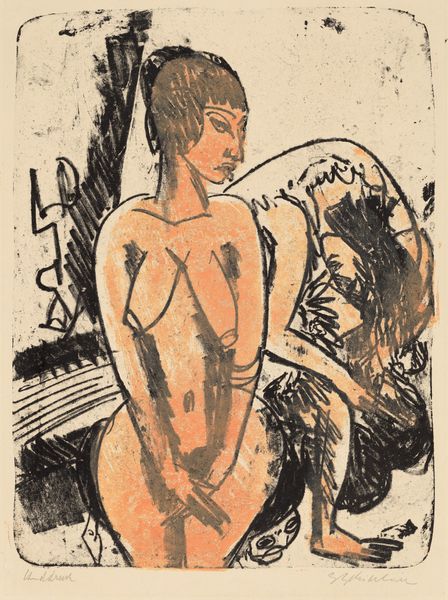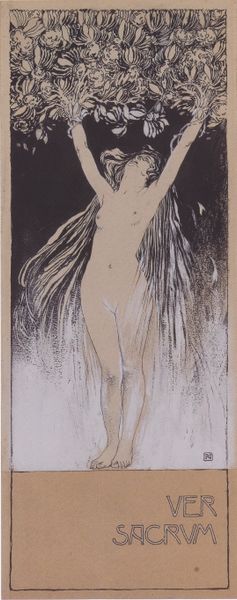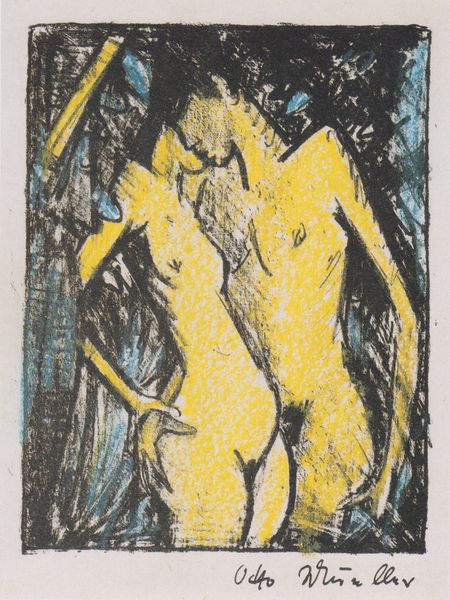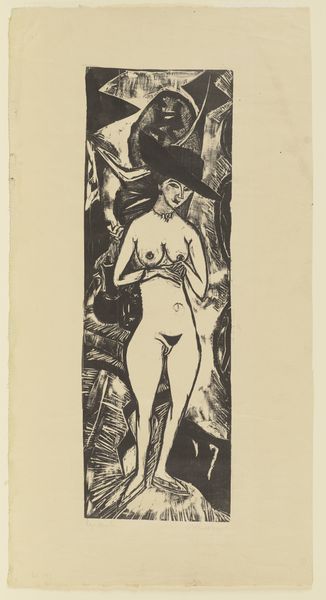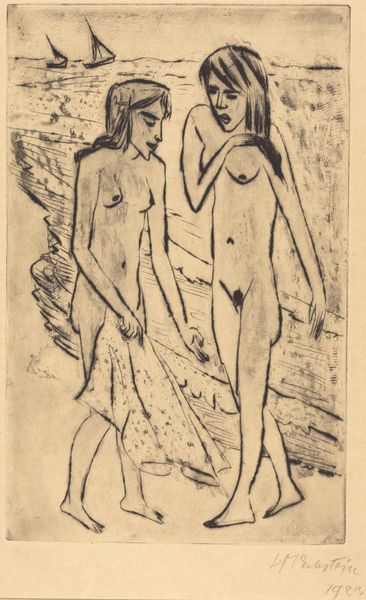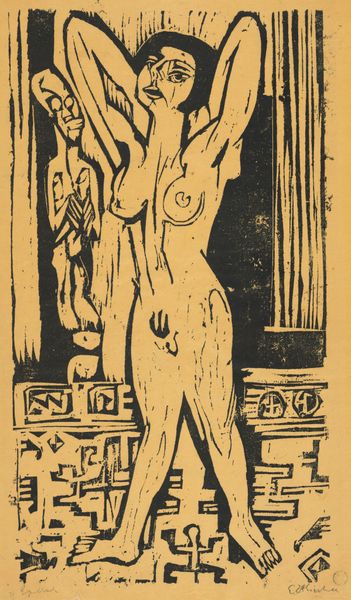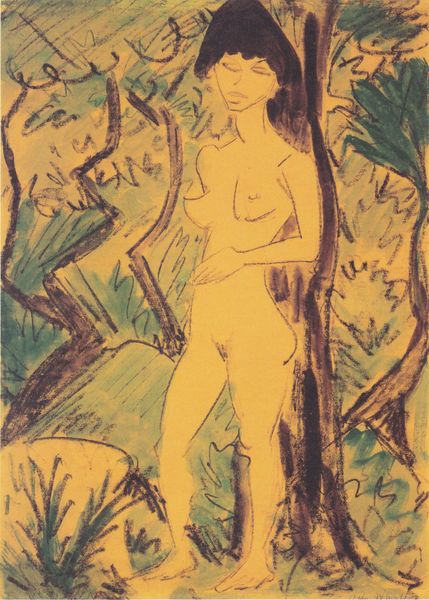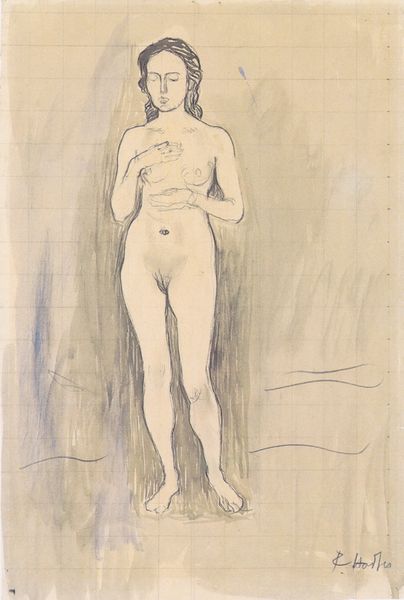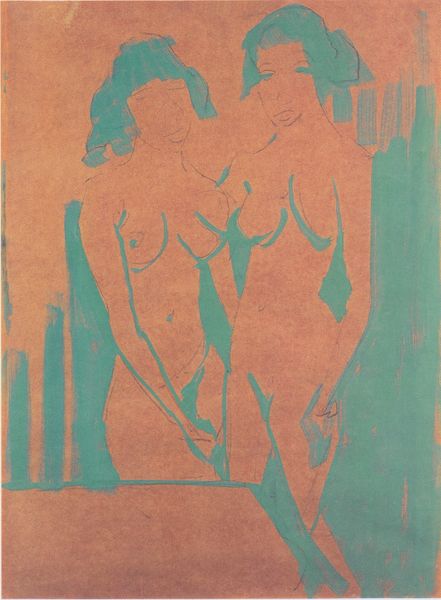
paper, watercolor
#
portrait
#
figuration
#
paper
#
watercolor
#
expressionism
#
line
#
watercolour illustration
#
nude
#
modernism
#
watercolor
Dimensions: 30.3 x 44.7 cm
Copyright: Public domain
Editor: We're looking at Otto Mueller's "Liebespaar," created around 1918. It’s a watercolor on paper, depicting a nude couple. The loose lines and muted tones give it a rather vulnerable, almost melancholic feel. What’s your interpretation? Curator: Focusing on its formal properties, the stark linear construction contrasts interestingly with the fluidity inherent to watercolor. The figures, seemingly outlined rather than volumetrically rendered, appear almost as planar cut-outs against a suggestive, amorphous background. How does this juxtaposition influence your reading of the work's emotional tenor? Editor: It makes the figures seem isolated, even within the embrace. Like they’re present, but also not entirely there. Almost ghosts. Do you think that reading into their emotional state is justified from a formal perspective? Curator: Precisely. Consider how Mueller disrupts conventional notions of form and representation. By reducing the figures to simplified lines and planes, he challenges the viewer to actively participate in constructing meaning. Does the ambiguity inherent in this reduction enhance the feeling of isolation that you mentioned? Editor: Absolutely. The absence of detail throws that sense of emotional detachment into sharper relief. The negative space becomes just as crucial as the figures themselves in conveying meaning. I initially felt like the title alone had given me the meaning. But it is much more nuanced. Curator: Indeed, the painting challenges conventional definitions, opening up new interpretative possibilities that the formal elements themselves create. Editor: That's fascinating. It really demonstrates how formal choices can profoundly impact the emotional weight of a piece, exceeding thematic expectations and leaving space for many readings. Curator: I agree, understanding an artist's methodology opens new depths of interpreting their intentions.
Comments
No comments
Be the first to comment and join the conversation on the ultimate creative platform.
